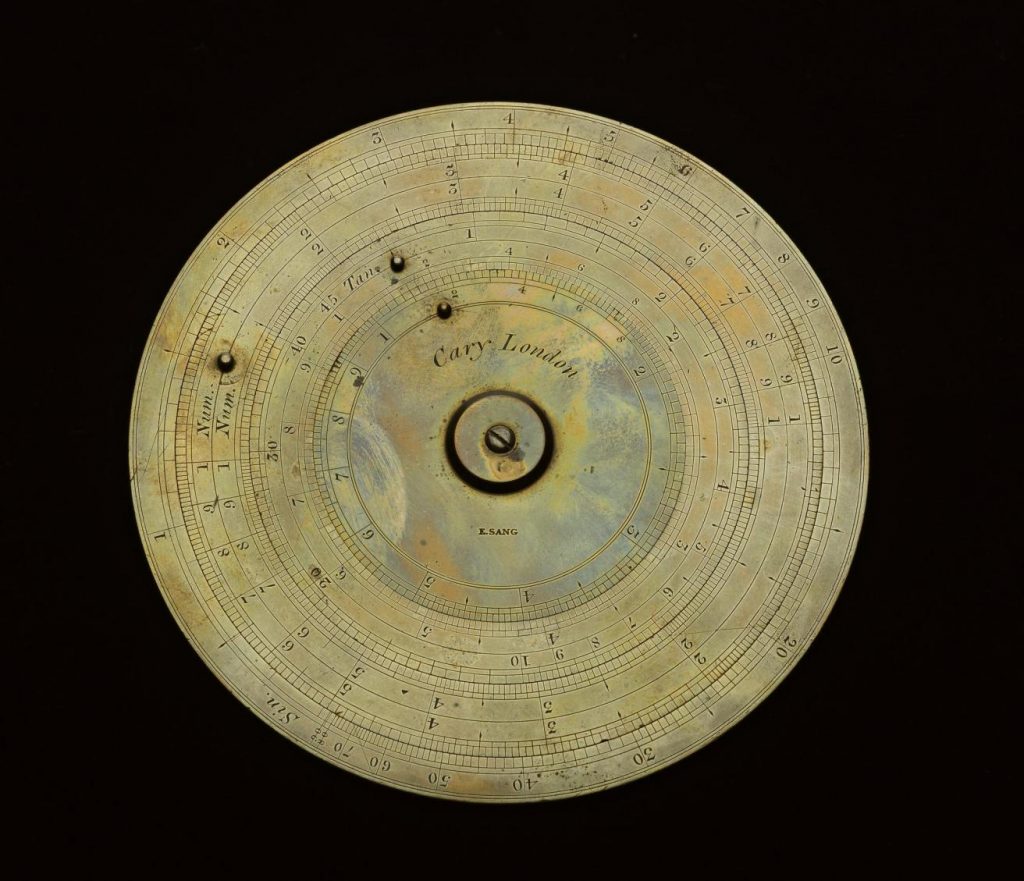Before electronic calculators were ubiquitous, many calculations had to be carried out by hand using pen and paper – or pencil! One of the most important tools, especially for the multiplication or division of long numbers, was logarithms. They were first published in 1614 by John Napier of Merchiston, and you can read more about them here.

Logarithms were published in tables where bigger was better, as bigger tables allowed more precise calculations. One of the biggest and best tables of logarithms was calculated in the late 19th century by the Edinburgh mathematician, engineer and scientific instrument maker Edward Sang (1805 – 1890) and two of his daughters, Jane Sang (1834 – 1878) and Flora Sang (1838 – 1925). The three of them had calculated, by hand, logarithms to 16 places (or significant figures), far in excess of the commonly used 7 place tables. These 47 handwritten volumes achieved a measure of fame in scientific circles for Dr Sang, and later on for the Misses Sang too, but no fortune! In fact they proved to be rather a white elephant, because of the high cost of printing such a large work, the few people who would actually use it, and the difficulty of fair recompense for the huge work of calculation.

In 1874, Edward Sang announced his calculations to the Royal Society of Edinburgh without acknowledging his daughters’ contributions. He had wished to do so, but Flora herself had objected, preferring to remain private. She wrote in 1907:
…when I learnt that he intended to associate my sister Jane’s name and my own with his in the calculation of the 15-place Table of Logarithms, I objected so strongly to having my name brought before the public that he was obliged to yield to me.
Here I acknowledge that I was wrong in my refusal, since by I placed my father in a false position. It is in order to redress this error of mine that I write this explanation.
In November 1890—the month before his death—when in his sick-room he was drawing up his “Account,” he said to me, he did not see why he should not acknowledge the assistance we had given him, and I at once consented.
Despite widespread acclaim for the feat of calculation, no organisation undertook to purchase or publish them. In 1890 Edward Sang died leaving debts of about £850 and household assets worth £100. The logarithmic and other calculations were not included in these valuations, but in 1905 Lord Kelvin estimated they had a fair value of £5,000 -£10,000 (at least £500,000 in today’s money).

In 1907 Flora Sang and her surviving sister Anna presented the tables, in 47 volumes, to the Royal Society of Edinburgh on behalf of the British Nation (after discussion about the exact wording of the transaction) and the ladies were supported with a government pension in recognition.
The publication of these logarithms was discussed on several occasions, including in 1914 at the celebrations of the 300th anniversary of the first publication of logarithms, but this never came to fruition. Thanks to computers, few if any people nowadays will do as much hand calculation as Flora, Jane and Edward Sang.